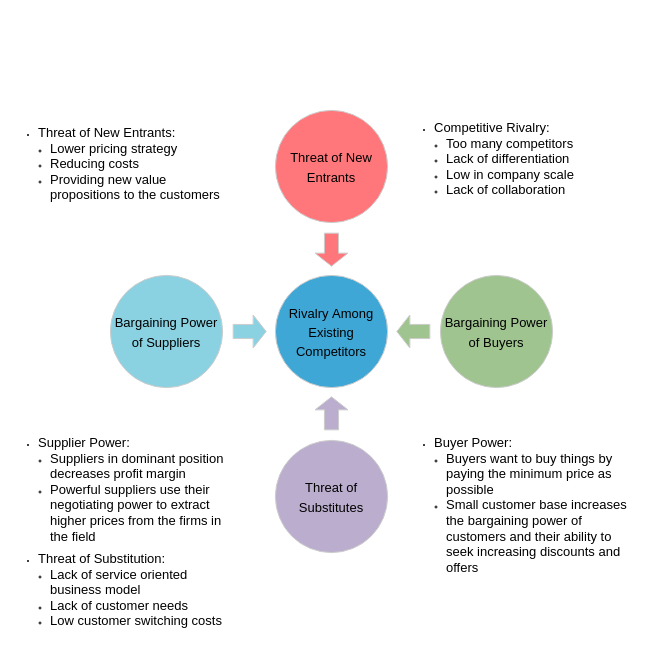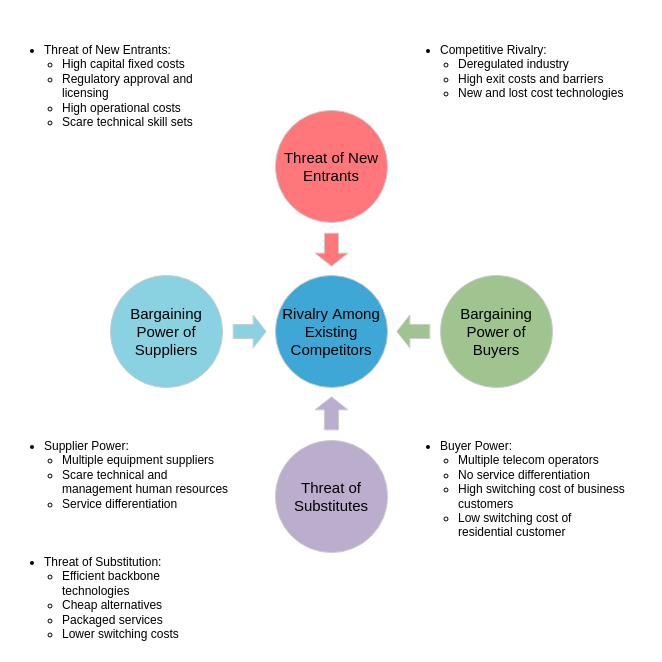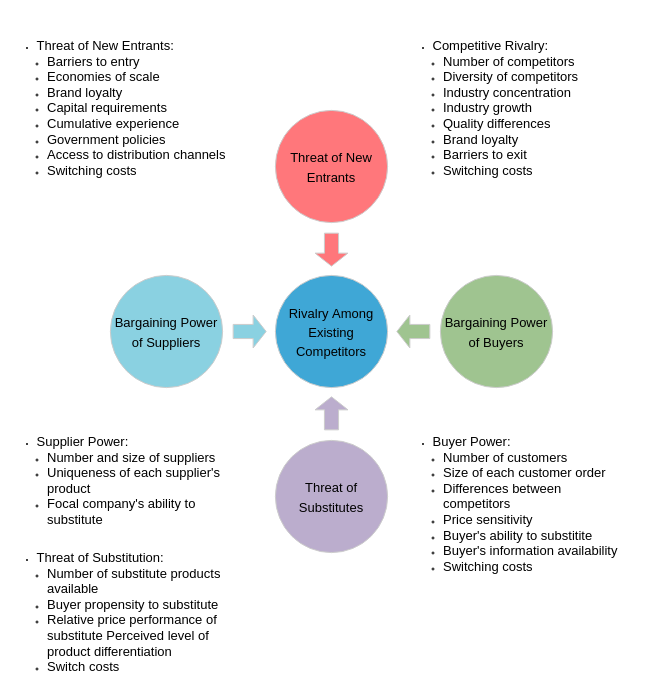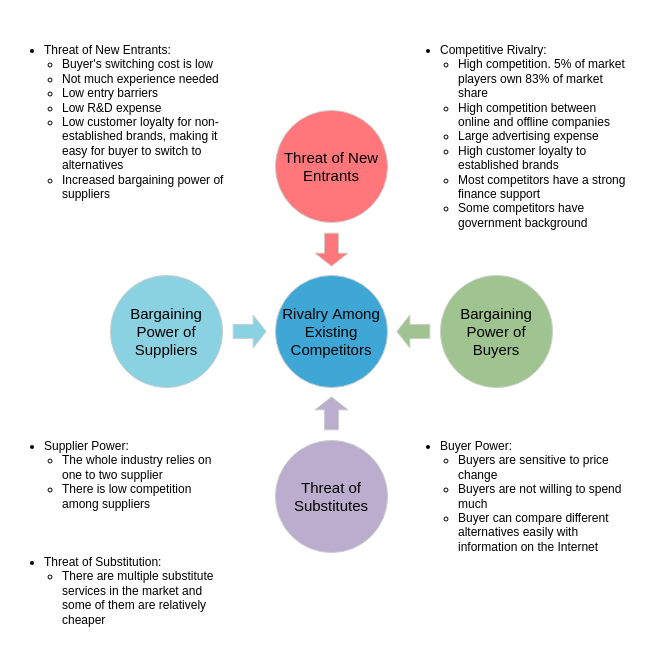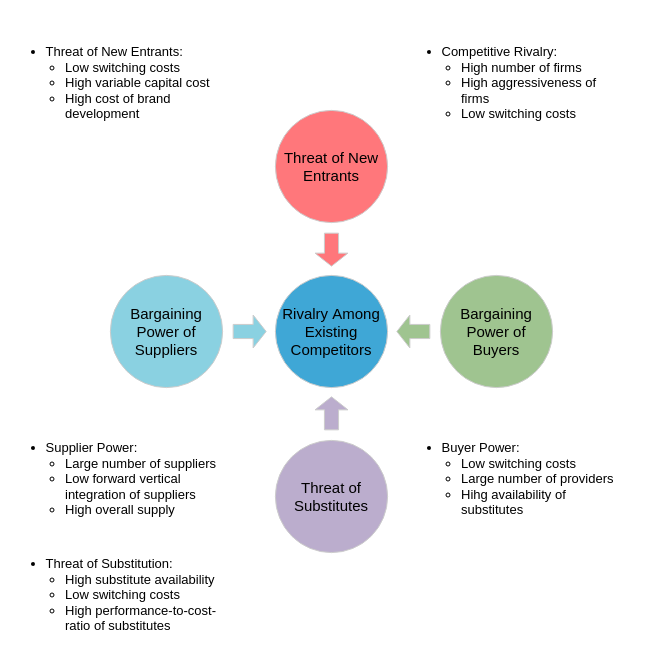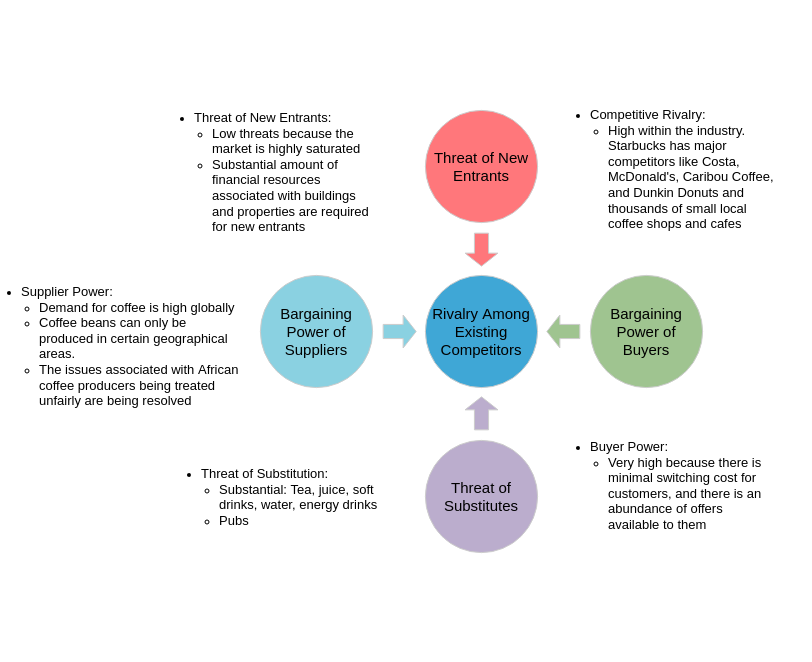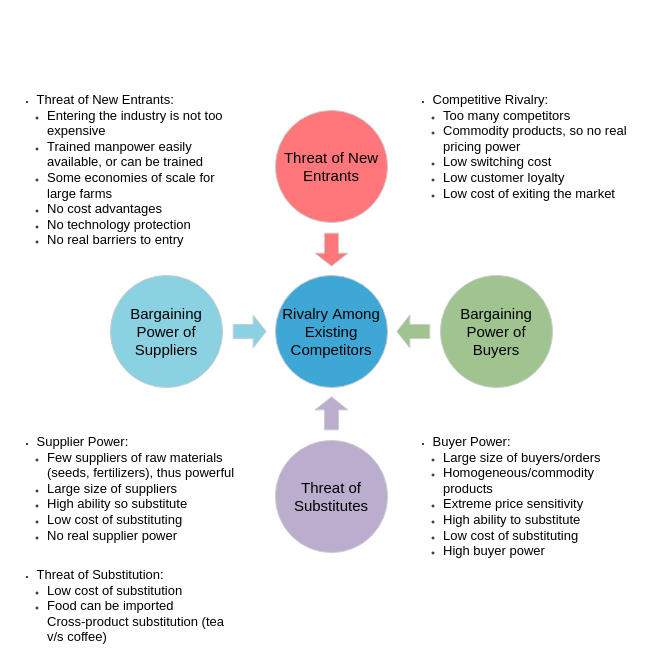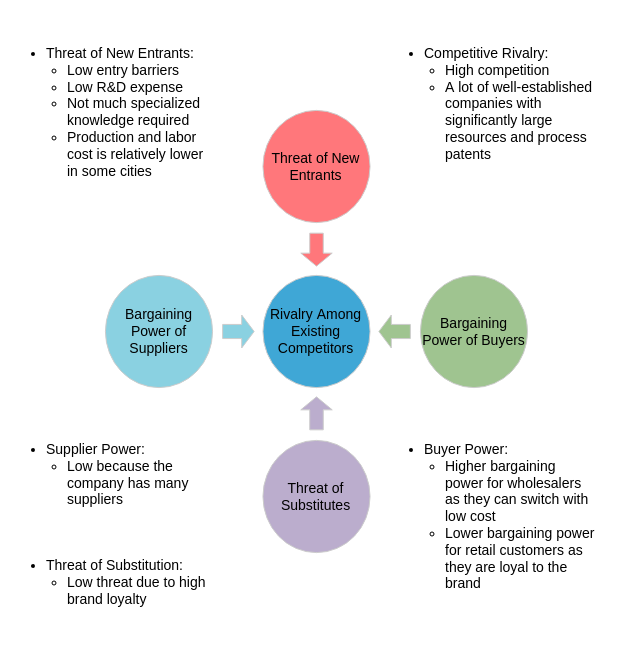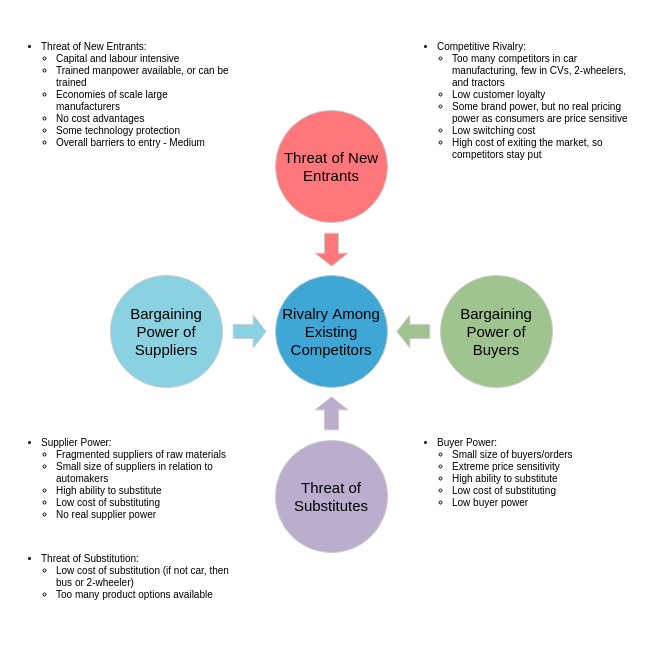Porter’s Five Forces: A Comprehensive Guide to Analyzing Industry Competition
The Porter’s Five Forces analysis model, developed by renowned Harvard Business School professor Michael E. Porter, has been a cornerstone of strategic management since its publication in the Harvard Business Review in 1979. This influential framework has transformed the way enterprises, organizations, and even entire countries approach strategy formulation.
At its core, the Five Forces analysis provides a global overview of the competitive landscape, helping companies assess industry attractiveness, predict industry trends, and determine the best industries to compete in. By understanding the five key forces that shape competition, businesses can position themselves for long-term success.
The Five Forces
The Porter’s Five Forces model identifies five primary sources of competition that collectively determine the profitability and attractiveness of an industry:
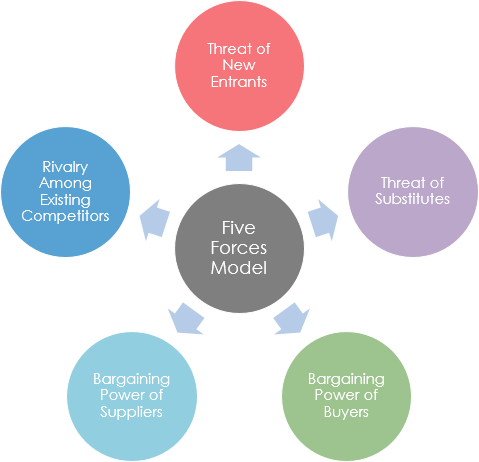
- Bargaining Power of Suppliers
When suppliers have a strong market position and the input elements they provide constitute a significant portion of the buyer’s total costs, their bargaining power increases. Suppliers with a stable market position, unique product characteristics, and the ability to integrate forward tend to have greater bargaining leverage. - Bargaining Power of Buyers
Buyers can exert pressure on existing industry players by demanding lower prices, higher quality, or better service. Buyers have strong bargaining power when they are few in number, purchase large quantities, and have the ability to switch between suppliers or integrate backward. - Threat of New Entrants
The threat of new entrants refers to the ease with which new competitors can enter the market and challenge the existing players. Factors such as economies of scale, product differentiation, conversion costs, and regulatory barriers can create significant barriers to entry, deterring potential newcomers. - Threat of Substitutes
Substitute products or services that can fulfill the same customer needs can pose a significant threat to the profitability of an industry. The availability of close substitutes limits the ability of existing players to raise prices and maintain healthy margins. - Rivalry Among Existing Competitors
Intense competition among existing players in an industry, manifested through price wars, advertising campaigns, or product introductions, can erode industry profitability. The degree of rivalry is influenced by factors such as industry growth, product differentiation, and the presence of exit barriers.
Applying the Five Forces Model
To effectively apply the Porter’s Five Forces analysis, businesses should consider the following steps:
- Assess Industry Attractiveness: Analyze the five forces to determine the overall attractiveness and profitability potential of the industry.
- Evaluate Competitive Position: Examine how the company’s resources and capabilities align with the industry’s competitive dynamics, identifying strengths and weaknesses.
- Formulate Competitive Strategies: Based on the Five Forces analysis, companies can choose from three generic strategies: cost leadership, differentiation, or focus.
- Maintain Strategic Flexibility: Recognize that market conditions are constantly evolving, and strategy formulation is a dynamic process that requires regular feedback and adjustment.
- Leverage Human Capital: Inspire and incentivize employees at all levels to ensure effective strategy implementation and sustainable competitive advantage.
The Power of the Five Forces
Porter’s Five Forces analysis is a versatile tool that has been applied across a wide range of industries, from manufacturing to financial services and high-tech. By providing a comprehensive understanding of the competitive landscape, this framework equips businesses with the insights necessary to navigate the complexities of the modern business environment and position themselves for long-term success.
Visual Paradigm Online: The Ideal Tool for Five Forces Analysis Infographics
When it comes to visualizing the findings of a Porter’s Five Forces analysis, Visual Paradigm Online is an exceptional choice. This cloud-based diagramming and modeling platform offers a robust set of features that make it the ideal tool for creating compelling and informative Five Forces analysis infographics.
Intuitive Diagramming Interface
Visual Paradigm Online provides an intuitive and user-friendly diagramming interface that allows you to easily create visually appealing Five Forces analysis diagrams. With a wide range of pre-built templates, shapes, and design elements, you can quickly assemble a professional-looking infographic that effectively communicates the key insights from your analysis.
Customizable Visuals
The platform offers a high degree of customization, enabling you to tailor the infographic to your specific needs. You can adjust the color scheme, typography, and layout to align with your brand guidelines and ensure a consistent visual identity across your strategic communications.
Collaborative Capabilities
Visual Paradigm Online’s collaborative features make it easy for teams to work together on the development of the Five Forces analysis infographic. Multiple users can access and edit the diagram simultaneously, facilitating real-time feedback and iteration.
Seamless Presentation Integration
Once you’ve created your Five Forces analysis infographic, you can easily integrate it into presentations, reports, or other documents. The platform supports exporting the diagram in a variety of formats, including PNG, SVG, and PDF, ensuring a smooth integration with your existing workflows.
Cloud-based Accessibility
As a cloud-based tool, Visual Paradigm Online can be accessed from anywhere, allowing you to work on your Five Forces analysis infographic from any device with an internet connection. This flexibility is particularly valuable when collaborating with team members across different locations.
By leveraging the capabilities of Visual Paradigm Online, you can elevate your Five Forces analysis into a visually compelling and impactful infographic that resonates with your audience and supports your strategic decision-making process.
Learn more Five Forces Analysis by Examples
Five Forces Analysis – 10 templates


